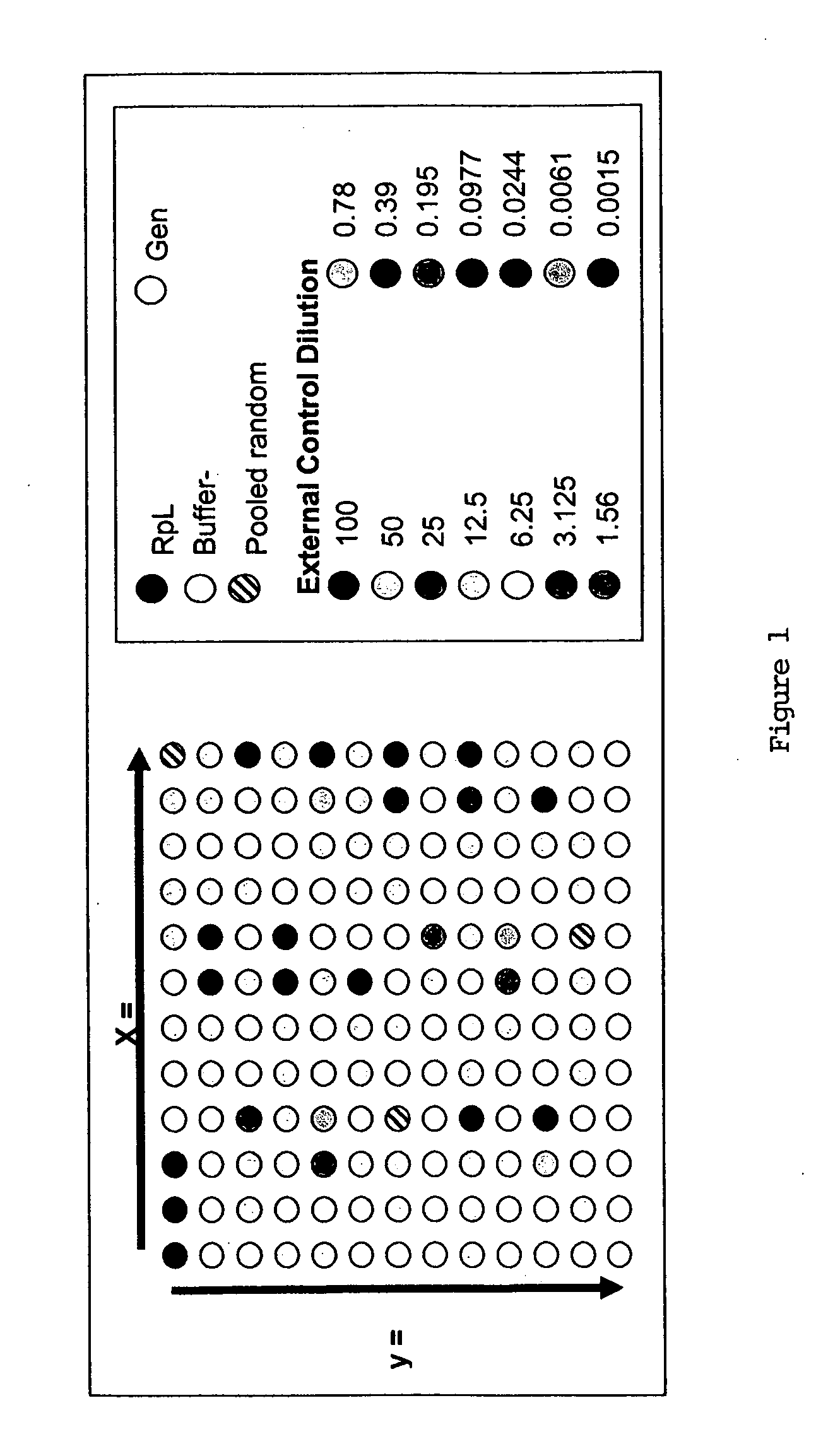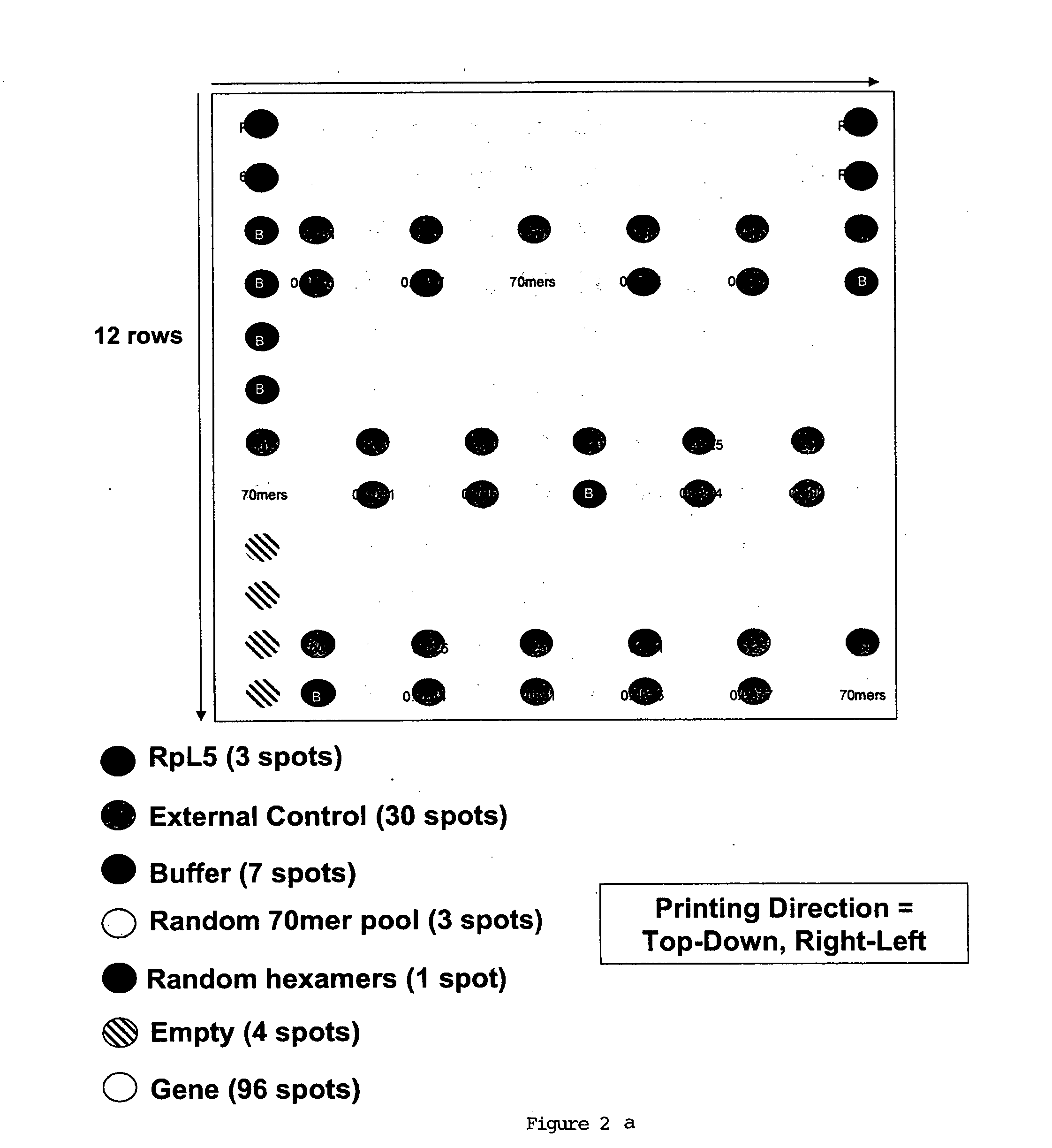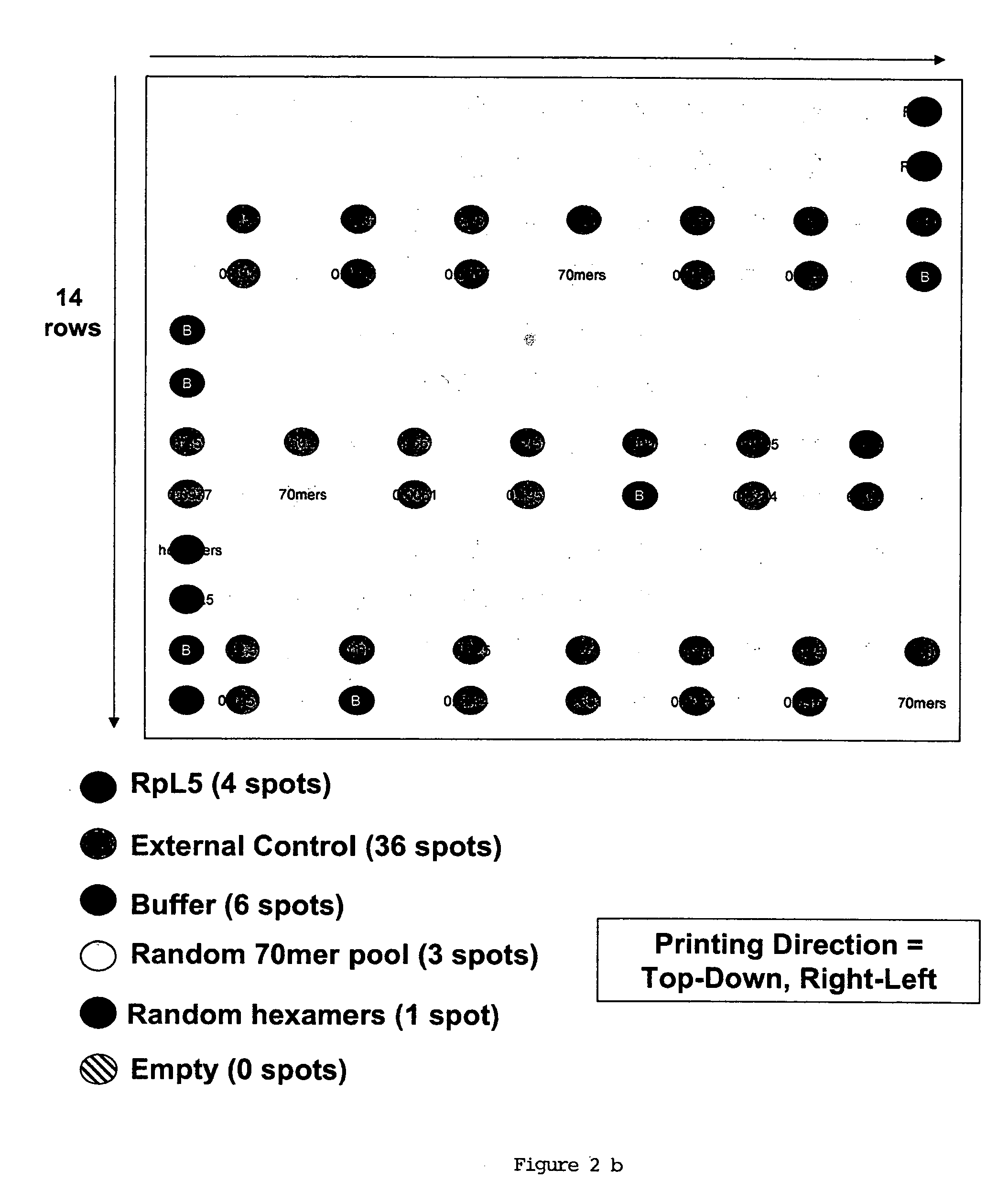In situ dilution of external controls for use in microarrays
- Summary
- Abstract
- Description
- Claims
- Application Information
AI Technical Summary
Benefits of technology
Problems solved by technology
Method used
Image
Examples
examples
[0139] The following examples are illustrative of the applicability of the present invention and are not intended to limit its scope. Modifications and variations can be made therein without departing from the spirit and scope of the invention. Although any method and material similar or equivalent to those described herein can be used in the practice for testing of the present invention, the preferred methods and materials are described. The following experimental procedures and materials were used for the examples set fort below in the normalization of the inventors ToxArray®.
A. Materials and Methods
[0140] 1. Gene Selection and Probe Design
[0141] Genes predictive of toxicant exposure were established from in house gene expression data, gene expression studies in the current literature, and statistical re-analysis of publicly available microarray data.
[0142] The following information was acquired through publicly available databases for each gene:
[0143] Official gene symbol a...
PUM
| Property | Measurement | Unit |
|---|---|---|
| Fraction | aaaaa | aaaaa |
| Molar density | aaaaa | aaaaa |
| Molar density | aaaaa | aaaaa |
Abstract
Description
Claims
Application Information
 Login to View More
Login to View More - R&D
- Intellectual Property
- Life Sciences
- Materials
- Tech Scout
- Unparalleled Data Quality
- Higher Quality Content
- 60% Fewer Hallucinations
Browse by: Latest US Patents, China's latest patents, Technical Efficacy Thesaurus, Application Domain, Technology Topic, Popular Technical Reports.
© 2025 PatSnap. All rights reserved.Legal|Privacy policy|Modern Slavery Act Transparency Statement|Sitemap|About US| Contact US: help@patsnap.com



